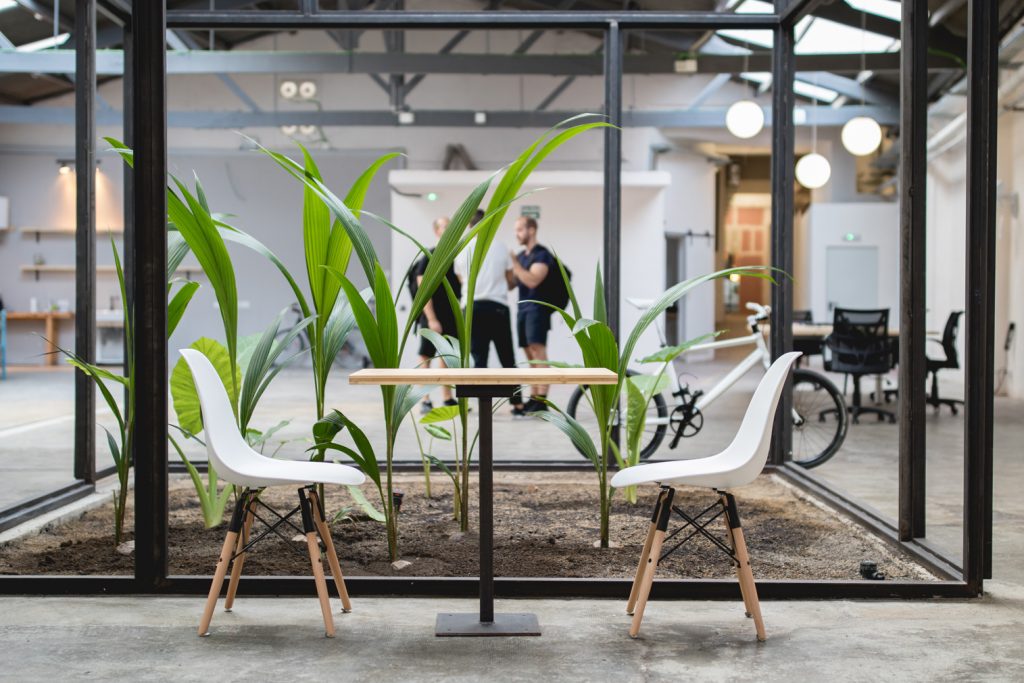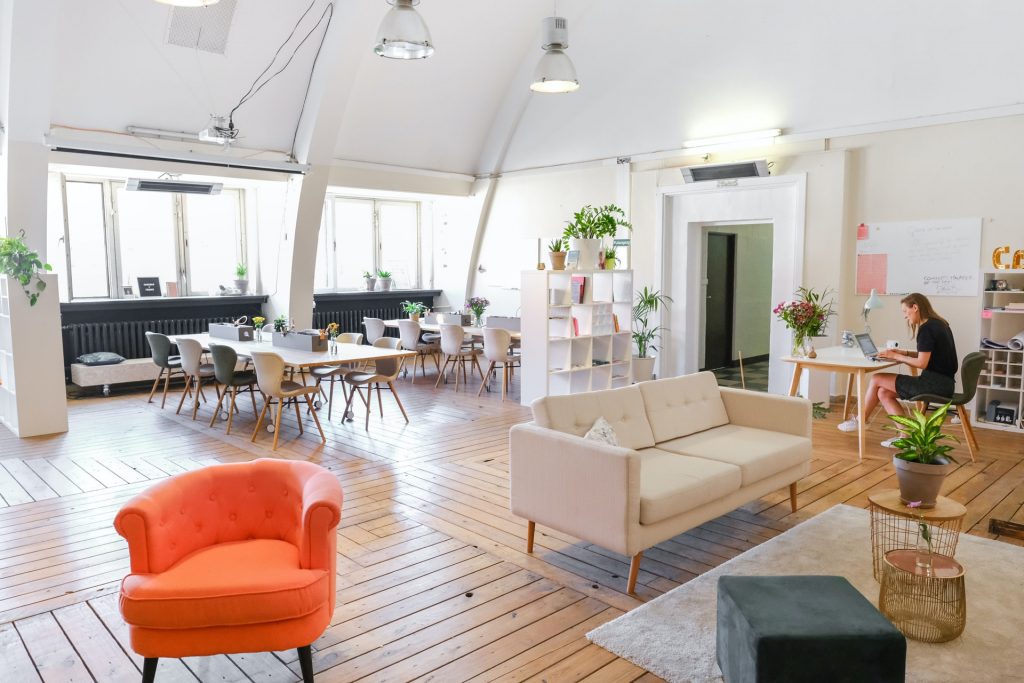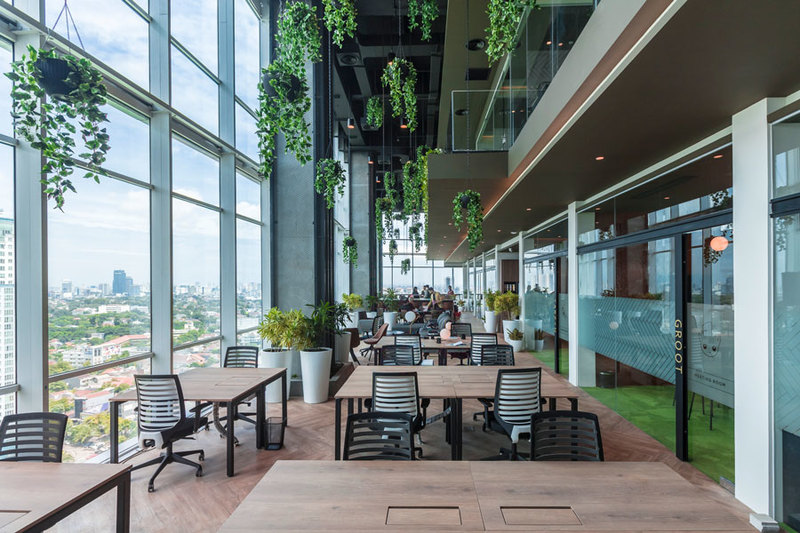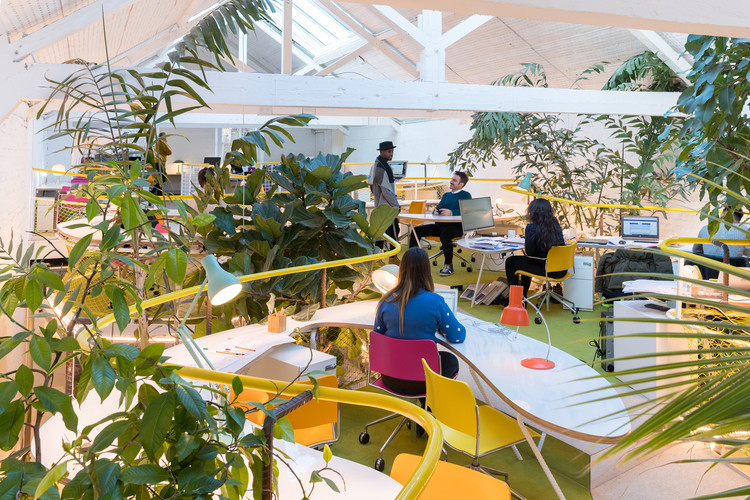The way we experience the workplace has shifted in the last 15 years. This is due to the new opportunities given by the digital systems available and the new needs brought by this shift.
The 4th Industrial Revolution is leading to a change in the global business landscape where any small group of individuals, whether employees of large corporations or self-employed workers, can establish powerful business models with little more than a laptop and a mobile phone.
In this context, networking and flexibility are a natural fit and the modern business world will be compelled to embrace the new work paradigm.
Digital workers and enterprises, also due to the COVID 19 pandemic, realized that many operations are possible and well performed from remote. The lockdown experience constituted a boost in this sense, accelerating a process that was already in the making.

LOCATION-INDEPENDENT WORK
The big experiment of remote working came with its merits. Companies realized that they can hire with few geographic limits while avoiding the significant overheads associated with office buildings and supplies.
The remote workers enjoyed a new work-life balance, saving the commuting time and being able to have a more flexible schedule.
Indeed, the next architectural revolution in office design may see the change of the traditional workplace, whether through automation or remote working.
At this scope, shared spaces may provide an effective compromise between traditional and remote working: highly-equipped communal offices that allow employees to work effectively with colleagues across the world, yet without suffering from the physical isolation and loneliness that is often highlighted as a major pitfall of remote working.
COWORKING SPACES FIRST EXPERIENCE: HOW IT STARTED
Shared working spaces are commonly known under the name of Coworking, and their concept is departing further from the traditional office typology.
Even though there were previous spontaneous examples of shared workspace, the business model was set in 2005 by Brad Neuberg, who was looking for
“the freedom and independence of working for myself along with the structure and community of working with others”
The first coworking space was the San Francisco Coworking Space at Spiral Muse, which was a feminist collective and allowed Neuberg to use the space a few days a week. (read the full story at the link).
WHAT IS COWORKING?
Collaborative working places are a contemporary workplace phenomenon where independent professionals work alone together in a shared office space on a paid membership basis.
These mostly unaffiliated, location-independent knowledge workers can benefit from the physical and social proximity in many different forms, including knowledge exchange, construction of a sense of community, and a form of positive competition among members. As such, coworking spaces allow remote workers to work outside their homes in a more stimulating environment.
So, coworking appears to be an efficient alternative to traditional workspace environments. Members tend to find it easier to work with people coming from different backgrounds and with different goals, expertise, and projects. As a collaborative environment, it becomes more natural to help other members, and the demographic diversity can positively contribute to each member’s skill set.

COWORKING AS AN EXPRESSION OF THE SHARING ECONOMY
Coworking is known as a practice within the Sharing Economy because it encourages the sharing of office space, social space, and office infrastructure.
It has proved to be a successful business model and, as a matter of fact, in a few years, it became a global phenomenon, flourishing in many countries and, being a practice belonging to the sharing economy, coworking spaces possess a huge potential to support environmental sustainability.
What do we know about the sharing economy? As the definition states: the sharing economy consists of activities“where economic agents share economic objects together to create values”.
It is commonly accepted that business models within the sharing economy have the potential to create more sustainable consumption patterns, as they may have a positive economic, social, and environmental impact, even if not all sharing economy practices are by default sustainable.
To have a clear frame, we need to go a bit more technical in assessing the characteristics that make a practice sustainable.
READ MORE Why Coworking is the future of work?
5 PROPERTIES OF THE SHARING ECONOMY THAT SIGNAL A SUSTAINABLE APPROACH[1]
- The sharing economy is mediated by Information and Communications Technology. This means that technology offers the opportunity for the sharing economy to be scalable;
- There is an advantage for the non-ownership of the products;
- Consumers only get temporary access to the products;
- Goods are rivals in consumption;
- The goods within the sharing economy are tangible.
These five properties are useful in assessing the sustainability of parts of the sharing economy. Indeed, business models within the sharing economy have the potential to create more sustainable consumption patterns, as they may have a positive economic, social, technological, and environmental impact.
All those aspects are very important for many reasons but, a big part of the emphasis on sustainability within the sharing economy is reported to be environmental.
SUSTAINABILITY
As part of the sharing economy, coworking is increasingly popular and is often associated with sustainability. Indeed, is a common opinion that choosing to work in a coworking space tends to be more than a professional choice: many workers experience it as a major evolution towards a more efficient, fair, and sustainable way of doing business.
WHEN A COWORKING SPACE IS SUSTAINABLE ?
Well, the answers to this question may come from different points of view.
It is believed that coworking spaces can be sustainable in their design and practice sustainable business models. However, there is no consensus on what a sustainable coworking space entails: whilst some prioritize environmental and community factors, others have a mixed focus[2].
From an economic perspective, the sustainability of a coworking space is partly determined by the level of continuous demand and occupancy of the space: since it is used as a “shared good”, virtually there wouldn’t be any downtime in the fruition. Moreover, some researches [3] shows links between the climate of a coworking space and the sustainable business model outcomes of its member firms.
A SUSTAINABLE BUSINESS MODEL
According to the definition [4], “a sustainable business model can be defined as a business model that creates, delivers, and captures value for all its stakeholders without depleting the natural, economic, and social capital it relies on.”
This definition overlaps the definition of Sustainability, defined as meeting the needs of the present without compromising the ability of future generations to meet theirs. It has three main pillars: economic, environmental, and social. These three pillars are informally referred to as people, planet, and profits.

FROM THEORY TO PRACTICE
Following, a non-exhaustive list of practices that put in place those concepts, applying the Sustainability statements to the reality of a workplace and a community enjoying it:
- Technological (Material Productivity and Energy Efficiency, Create value from waste, Substitute with renewables and natural processes)
- Complying with building sustainability codes (such as LEED)
- Using an existing building and renovating it, instead of building a new one.
- Using renewable energy (such as solar energy) to power the coworking space.
- Creating a green interior and exterior co-working environment.
- Social (Deliver functionality rather than ownership, Adopt a stewardship role, Encourage sufficiency)
- Flexible access to the coworking space around the clock.
- Sharing office infrastructure
- Having the coworking space be near to public transport.
- Offering additional health-related services such as yoga classes or gym access
- Encouraging members to be socially responsible
- Organizational (Repurpose for society, Develop scale-up solutions)
- Placing people over profit
- Creating a strong community within the coworking space
- Using the coworking space to support social causes
- Helping member firms/individuals expand their business
- Creating strong relationships with sustainable businesses outside of the coworking space.
To give an answer to the initial statement, the factors important to a sustainable coworking space, are:
- environmental sustainability
- sustainable mobility
- economic sustainability
where environmental sustainability is usually the main point to focus on when assessing the characteristics of a coworking.

SUSTAINABLE MOBILITY
In theory, the creation of coworking spaces reorganizes the way people go to work. As this often occurs in urban environments, it may reduce the use of less sustainable means of transport and encourage the use of bicycles and public transport.
The collaborative working spaces are strategically located at multiple prime locations. By this, they are trying to reduce commutes, and resultant CO2 emissions, by creating a workspace close to where people live.
The importance of sustainable mobility lies also in the merit of encouraging their members to be socially responsible.

ECO-FRIENDLY AND NATURAL LIGHTS
Many shared office spaces think efficiently in terms of lighting, are well illuminated with as much natural light as possible. The open and spacious layout helps in better transmission of light thereby making the coworking space bright with minimal usage of artificial light.
Often, workspaces are installed with intelligent LED lighting which uses much less power and has a considerably longer lifetime.

IN-HOUSE PLANTS AND GARDENS
As most of the coworking spaces have large and open common areas and courtyards, they incorporate a design philosophy of adding plants and greens to these areas. The Indoor plantation is not just a visual reminder of the green ideals but also improves the air quality by filtering harmful toxins.
In conclusion, coworking spaces need to consider their business model and their identity regarding sustainability.
Whilst a coworking space may be able to address sustainability aspects holistically with multiple approaches, addressing economic, social, as well as environmental issues, a specific business model requires certain sustainability aspects more than others.
So, what constitutes a sustainable office? A workspace that promotes ecological and environmental balance by reducing — or avoiding entirely — the depletion of natural resources.
Thanks for reading, and feel free to add suggestions and comments.
ecoarchitecture.it
SOURCES
Kolja Oswald, Xiaokang Zhao, What Is a Sustainable Coworking Space?, Donghua University, Shanghai, 2020.
Spinuzzi, C., Working Alone Together: Coworking as Emergent Collaborative Activity, Journal of Business and Technical Communication, Vol. 26 No. 4, 2012.
Lüdeke-Freund F., Business Model Concepts in Corporate Sustainability Contexts: From Rhetoric to a Generic Template for “Business Models for Sustainability”, Lüneburg: Centre for Sustainability Management, 2009.
Coworking Space Global Market Report 2021: COVID-19 Growth and Change to 2030 – ResearchAndMarkets.com
Coworking as a sustainable Pillar of Urban Ecosystems. – in publicjournal.online
Sustainable Coworking Spaces – in https://www.coworkingresources.org/
[1] Kolja Oswald, Xiaokang Zhao, What Is a Sustainable Coworking Space?, Donghua University, Shanghai, 2020.
[2] Ibid.
[3] Ibid.
[4] Lüdeke-Freund F., Business Model Concepts in Corporate Sustainability Contexts: From Rhetoric to a Generic Template for “Business Models for Sustainability”, Lüneburg: Centre for Sustainability Management, 2009.


